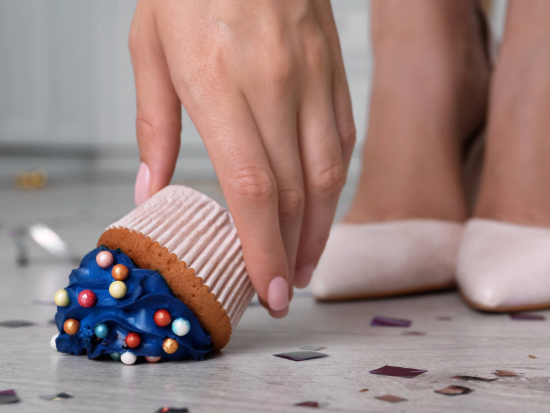 Is eating food that has fallen to the floor ever truly safe? Many cling to the “five-second rule,” which asserts that if you pick up dropped food within five seconds of dropping it, it is safe to still eat.
Is eating food that has fallen to the floor ever truly safe? Many cling to the “five-second rule,” which asserts that if you pick up dropped food within five seconds of dropping it, it is safe to still eat.
However, UAB researchers have debunked this myth, explaining that bacteria transfer can occur immediately upon contact.
“Bacteria can transfer to food the moment it touches a surface,” explained Jessica Scoffield, Ph.D., associate professor in the UAB Department of Microbiology. “Moisture significantly increases this transfer, and the type of surface and food also influence how quickly it happens.”
Scoffield provides insights into how bacteria are widespread on various surfaces, ultimately debunking the five-second rule.
Does surface cleanliness affect contamination?
We’ve all dropped food at some point, but how much of a risk does it really pose in terms of bacterial contamination? According to Scoffield, “The more contaminated a surface is, the higher the likelihood of bacteria being transferred to food.”
While surfaces like floors, tables, or countertops might appear clean, they can still harbor harmful bacteria that are invisible to the naked eye. Therefore, it’s always safest to discard dropped food, on any surface, to minimize the risk of contamination.
What should you do if you drop food?
It’s easy to think of dropped food as just a minor inconvenience, but the truth is that it can carry more risks than we realize. Dropped food can come into contact with a range of contaminants that we may not even consider, from the shoes we wear to the pets we love.
“I always remind people that it’s better to be safe than sorry,” Scoffield said. “Considering the variety of contaminants—like shoes, dust, pets, and luggage—that many floors are exposed to, it’s wise to simply discard the food.”
While tossing out food might seem wasteful, it is the safest option to avoid the risk of bacterial contamination.
Research on bacteria and food safety
According to Scoffield, the undergraduate students who work in her lab do an experiment where they swab their hands, cell phones, backpacks, desks, and doorknobs, then culturing the samples on bacterial growth media.
“Students are always in shock about the amount and different types of bacteria that grow on the petri dishes,” she continued. “While a person’s first instinct is often to discard food dropped on the ground, it’s important to remember that the same types of bacteria found on the floor are also present on common surfaces like cell phones, doorknobs, elevator buttons, and hands.”
Therefore, to reduce the risk of contamination, make sure to wash your hands thoroughly before eating.